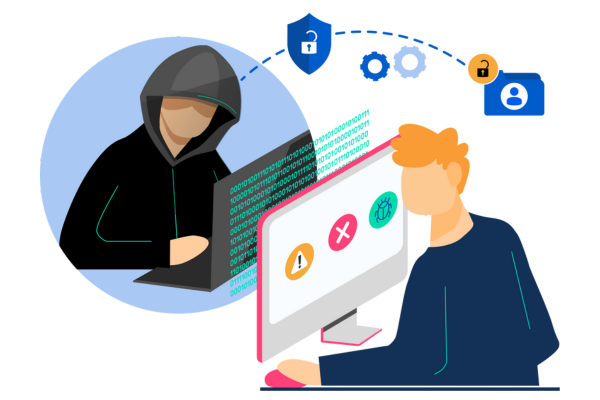Have you suffered from a data breach through your content management system? Perhaps you’re looking to streamline your CMS usage to use just one system, or maybe your web estate management tools require a number of add-ons, leaving you vulnerable to cyber attacks?
Streamlining and consolidating your web estate is the first step to take, as having multiple points of access means more for your IT team to protect and a higher risk of platform security breaches.
To start this security journey, opting for a cloud-native content management system is wise, as your data is securely stored in the cloud with an ‘air lock’ between your website and the platform, meaning your data is stored off-premises and off-site.
Managing and protecting your web estate is not just an IT team issue, it’s in the hands of developers and marketers too. It’s a company-wide effort, which involves making sure that the platform you choose stores your data securely, requires a minimal amount of add-ons and allows for quick content updates.
What do marketers want from a CMS, in terms of security?
Working from just one CMS, rather than multiple - as a surprisingly large number of Forrit’s recent report respondents said they do (88% have more than one), means less entry points for cyber attackers. Not to mention, it lessens the inefficient back-and-forth between platforms for your marketing team, making operations more efficient.
Equally, marketers need a content management system which allows for quick and efficient content updates to go live, in accordance with sector compliance. In a number of highly-regulated industries, accurate, up-to-date content needs to be displayed to website users, so that they can make informed decisions with the correct information. Across the board, presenting website users with such information should always be a priority, whether for regulatory purposes, or for CX.
A web estate management platform that has the necessary features used by marketing, for updating and managing content, so that they don’t need to go to IT to request add-ons permissions, leaving the CMS vulnerable to cyber attacks, is also key. Not only does it allow for streamlined operations but also helps IT and marketing work together smoother.
What are marketers’ biggest web estate management platform security concerns?
Forrit spoke with 250+ senior marketers in the FSI to find out what security worries they had regarding their current CMS. The report findings revealed that the top 5 biggest content management system security concerns were:
- Worries about the general rise in cyber attacks and their CMS becoming a target (50%).
- The security implications of any APIs or add-ons that the CMS requires (43%).
- Concerns that when new content is released, sensitive data could become compromised (41%).
- That security access by their team could become compromised (39%).
- That uploaded content could include infected data (36%).
Cloud-native CMS, Forrit One, has the solution to all of these problems - with enterprise-grade security, regular penetration testing and its API-first solution (your CMS content is separated from your website content by a one-way air lock, and stored in the cloud)... meaning, your data can’t be compromised through your CMS or through physical breaches either.
When it comes to who can use your CMS, Forrit One has that covered too. With customisable approval processes and access controls integrated with your Azure Active Directory, you can easily manage who has access, revoke or control permissions or apply approvals to certain types of edits.

What steps can I take to protect my web estate from cyber attacks and data breaches?
- Streamline your CMSs and consolidate your web estate.
- Opt for a CMS with the features you need, built-in, so it requires less add-ons.
- Choose a cloud-native content management system, to keep your data secure.
The security of the tools and platforms you use to create content and manage your web estate should be on both the minds of your marketers and your IT team alike, as both play a role in protecting your organisation from cyber attacks.
Next step: Opt for a cloud-based CMS, as it allows you to easily monitor the security of your platform, keeps your data secure in the cloud, rather than in onsite premises and helps you oversee who can access your web estate.
By streamlining your processes and migrating to just one CMS, you’re allowing for less entry points for attackers, as well as making life easier for your marketers. Your IT team’s job is made simpler too, as they’re able to easily monitor and adjust or remove access to the system, when needed. To migrate to use just one system, it’s important to choose a CMS with the tools you need, built-in, as well as one that stores your data separate to your web estate management system itself.
How can Forrit One help keep my web estate protected and my content compliant?
If your company is suffering from data breaches, or worried that they might be at risk through their current CMSs or your marketers are struggling to stay on top of sector compliance via frequent content updates, Forrit One can help.
Forrit’s cloud-native PaaS provides enterprise-grade security, with decoupled environments, regular penetration testing, easily-updatable content management system access controls and a number of content tools including AI-powered translation, enabling you to keep content compliant and go live quicker.
Forrit knows that regulatory compliance is key - having worked with a number of customers in highly regulated industries, thus Forrit One was built with security at its very core. From helping you present accurate, up-to-date information to customers locally and globally, allowing you to edit permissions and keeping your data separate from your CMS, and in the cloud, Forrit One has got your web estate security covered.
See what else Forrit One can do for you, check out Forrit One CMS features.
Interested in learning about the other challenges senior marketers are facing with their content management system? Download and explore our recent whitepaper.
Our latest blog articles
Create a top-quality customer experience.
Your CMS can supply the foundation for an outstanding customer experience.
Learn moreHow a CMS can improve ESG.
In recent years, we've seen ESG considerations shoot up the corporate agenda. Why the big fuss?
Learn moreThe CMO responsibility shift.
Business operating models have changed, and the C-suite is rapidly evolving alongside.
Learn moreA responsible CMS.
As the climate crisis moves higher up the media agenda, consumers are demanding action.
Learn more